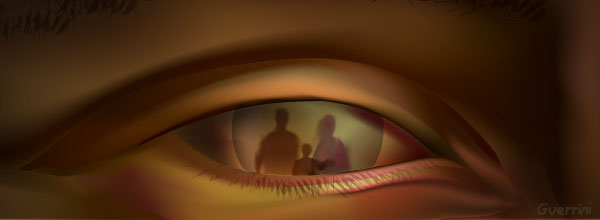Images help to deal with known issues, to allow the recording of perceptions of what the immediate world is, of what happened and what is happening by recording and processing past experiences. Consequently, images are stored in the mind allowing the memory recall them whenever necessary. Whenever they are needed they are recalled in order to remember and understand the world where someone is living, inducing the association of ideas and connections of meanings that help to reassure, comfort, and improve someone’s relation to the world. In this sense, Lacan points out that the “image has the advantage of being a captivating signal isolated from reality, which attracts and captures certain libido of the subject, some instinct thanks to which, in fact, the living being can almost organize its behaviours” (Lacan, 1999: 233).
Among those images there will be stories and memories from where we can find the initial images, the visual basis of each person’s memory. Images which somehow have conditioned the classification for the rest of the material that was added next. In this sense, such as Freud argues, in the first three or four years of someone’s life certain impressions stabilize our memory. As he points out on his writing about the uncanny, “our earliest childhood memories will always be an object of special interest, because the problem of why it is that those impressions that have the most powerful effect on our whole future need not to leave a memory image behind – leads us to reflect on the emergence of conscious memory in general… given the great sensory intensity of the images and the efficient functioning of the memory in the young” (Freud, 2003: 19-21).
Accordingly, different events and scenarios are seen as familiar and acceptable. For instance, the world becomes fixed because images in the mind are constructed on the basis of our memories of things, offering information about who someone is in time, space and sense. It is in this inter-textuality, where an image triggers off in our mind an older image that we already had, connecting both into inter-referential chains of citation. Hence, visual representation immediately shoots the association chain that would catalogue anything under the cultural parameters possessed by the spectator, determining which of its attributes, which scene and belonging contexts are part of this information. Thus, to represent a reality, a representation must contain something so valuable that would speak in the name of someone or something; it must transmit something that differentiates values and it must customize its messenger. One of these “somethings” is information.
©Sebastian Guerrini, 2009








